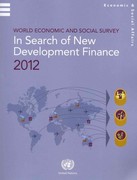Question
The following tables describe the hypothetical PPC (product possibility curves) for Canada and North Korea for Fish and Lumber (both in millions of tonnes). Before
The following tables describe the hypothetical PPC (product possibility curves) for Canada and North Korea for Fish and Lumber (both in millions of tonnes). Before trade Canada produce at point D and North Korea at point B.
Canada | A | B | C | D | E | F |
Fish | 0 | 4 | 8 | 12 | 16 | 20 |
Lumber | 100 | 80 | 60 | 40 | 20 | 0 |
North Korea | A | B | C | D | E | F |
Fish | 0 | 10 | 20 | 30 | 40 | 50 |
Lumber | 15 | 12 | 9 | 6 | 3 | 0 |
A) In Canada the opportunity cost of 1 unit of Fish is Answer:
0.2 / 0.30 / 0.83 / 3.335
B) In North Korea the opportunity cost of 1 unit of Lumber is Answer:
0.2 / 0.3 / 0.83 / 3.335
C) Canada has a comparative advantage in Answer:
FishLumber
both Fish and Lumber
neither Fish nor Lumber
D) and therefore should importAnswer:
FishLumber
both Fish and Lumber
neither Fish nor Lumber
E) Assume each country specializes in its area of comparative advantage.
For trade to occur, the limits of the terms of trade for 1 uint of Lumber will be Answer:
0.2 to 3.33
0.3 to 5.0
0.3 to 0.83
1.2 to 3.0
Step by Step Solution
There are 3 Steps involved in it
Step: 1

Get Instant Access to Expert-Tailored Solutions
See step-by-step solutions with expert insights and AI powered tools for academic success
Step: 2

Step: 3

Ace Your Homework with AI
Get the answers you need in no time with our AI-driven, step-by-step assistance
Get Started


